AMIDST all the great pulp thrills and features in Sky Fighters, they ran a true story feature collected by Ace Williams wherein famous War Aces would tell actual true accounts of thrilling moments in their fighting lives! This time we have Lieutenant Paul Marchal of the French Flying Corps!
Paul Marchal joined the 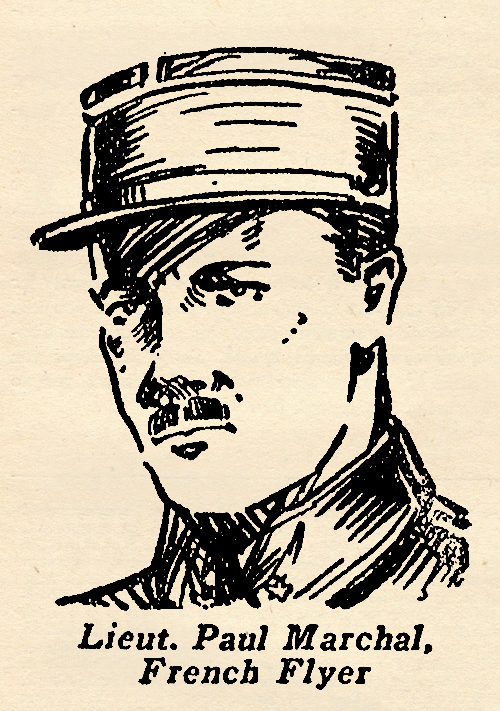 colors on the first day war was declared, and it was he that answered the challenge of that bold German, lieutenant Max Immelmann, when the latter bombed Paris with leaflets calling for surrender. Immelmann had to fly a matter of but a hundred kilometers, or less, to get over the city of Paris. But when Marchal answered his challenge with an identical flight to Berlin, he had to fly 8QO kilometers.
colors on the first day war was declared, and it was he that answered the challenge of that bold German, lieutenant Max Immelmann, when the latter bombed Paris with leaflets calling for surrender. Immelmann had to fly a matter of but a hundred kilometers, or less, to get over the city of Paris. But when Marchal answered his challenge with an identical flight to Berlin, he had to fly 8QO kilometers.
The fact that Marchal succeeded in bombing Berlin with leaflets proves his unusual courage and daring. Marchal was the first sky fighter to be captured by the Germans. Likewise he was the first to make his escape from a German prison camp and rejoin his squadron after a trek through hostile Germany that reads like a page from epic literature. Before his flaming career on the front was inadvertently halted, young Paul Marchal was awarded the Croix de Guerre, the Medal Militaire, and the Cross of the Legion d’Honneur. He told the story below upon his return to France after escaping from Germany.
BOMBING BERLIN
by Lieutenant Paul Marchal • Sky Fighters, April 1936
THE idea of a flight over Berlin bloomed suddenly in my dumb brain. Of course, if my motor should fail, or the avion falter, or should I run into contrary winds and had weather, I was doomed to failure. But I was willing and anxious to try.
Finally mon-commandant reluctantly consented. Then began the period of preparation. I had charted my course over Germany, intending to fly down the valley of the Moselle into the Rhine, then along the Rhine until it veered off suddenly to the left. After reaching Berlin, and dropping my leaflets, I was going to bend off to the right and make a try for Poland, the terrain of our Russian allies.
To lessen weight, I dispensed with all guns except a small pistol with a single full cylinder of ammunition. The day was just dawning, when my avion was wheeled from the hangar and faced toward the east. I shook hands all around, then took my place in the cockpit. After a long run I got into the air, and headed straight for the trenches, waving back over my shoulder as I left my comrades behind. Would I ever see them again? I did not know.
Over the trenches I was fired at. Some of the bullets made holes in my wings. One or two enemy avions I spied, or thought I did. But in the half light they did not see me. When it was fully light, I was far behind the enemy lines.
Over Unknown Terrain
The winding Moselle heaves into view. I course along it until it empties into the Rhine, then I follow up the Rhine. It is a splendid day.
I have been hours in the air it seems when I must leave the Rhine and strike out over terrain unknown to me. But I have studied my carte Taride well, and I recognize the cities as I fly over them.
Finally Berlin looms beneath me. I am very high now. Over the Unter den Linden I fly, tossing my leaflets out on both sides. They flutter down like snowflakes.
But I am not to get out of Berlin without being shot at, and enemy avions come up, too. But I am so high that I run far from Berlin before they can reach my elevation . . . and they give up the chase.
Flight Toward Poland
Kilometer after kilometer, I fly in a straight line for Poland. I think I am going to make it when I see the Polish villages across the border line far ahead of me. But no, I am still 30 kilometers or so away, when my engine starts to spit.
I am still 20 kilometers from the Polish border when I am forced to spiral down and light on a plowed field. Being so near the border, there are many soldiers, and they run towards my avion as it volplanes down. I consider if I should use my pistol and make a fight of it. But I decide not to. There are too many against me.
That is all there is to it. I was taken prisoner and sent to a prison camp in Silesia, but I have made the longest flight in the war. And I have scattered French leaflets over the German capital. I had delivered my answer, France’s answer to Max Immelmann and the Imperial Army. The people of Berlin knew now that they were no longer safe from attacks by air.
Next Time: LIEUTENANT NORMAN PRINCE
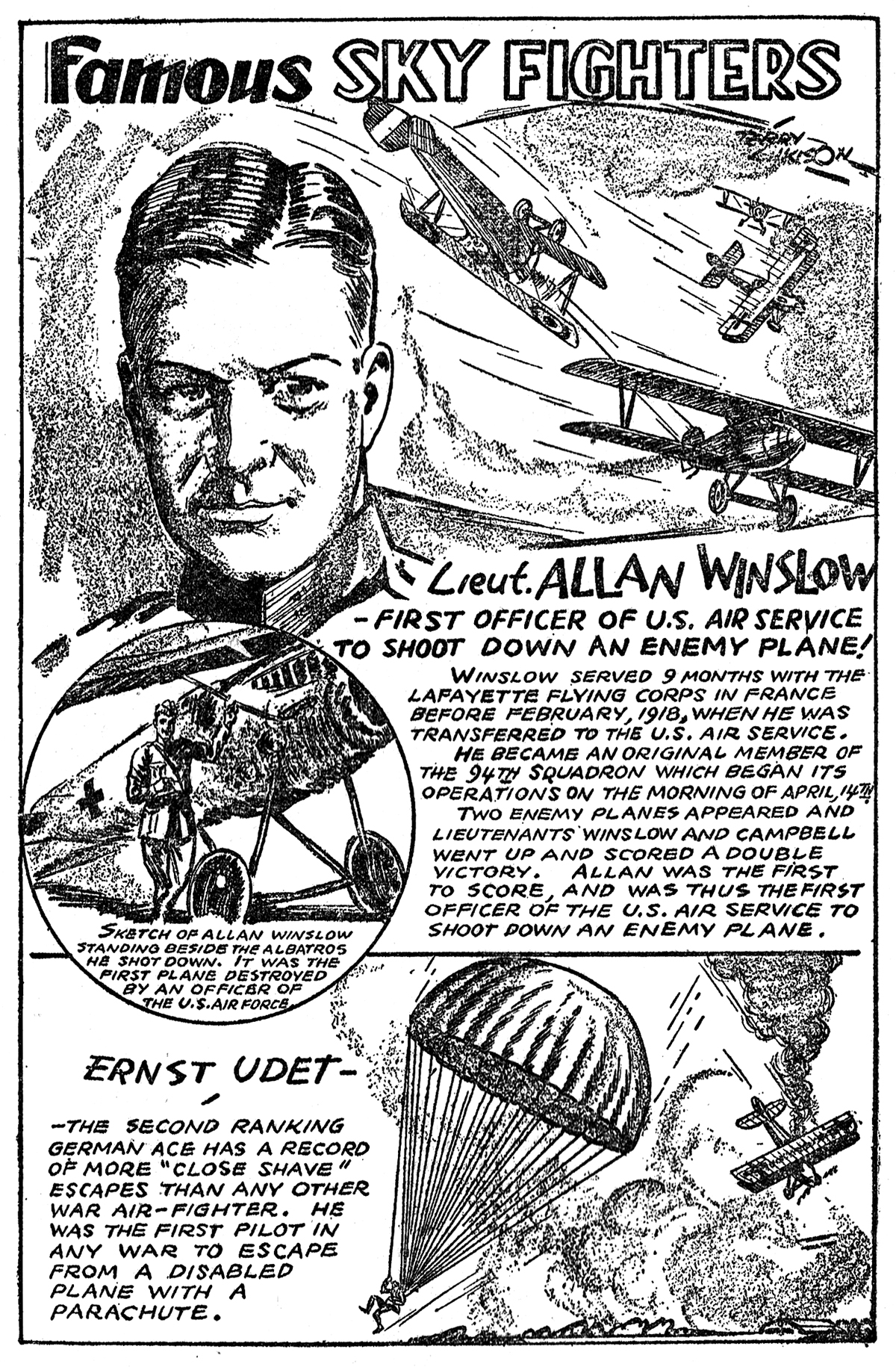
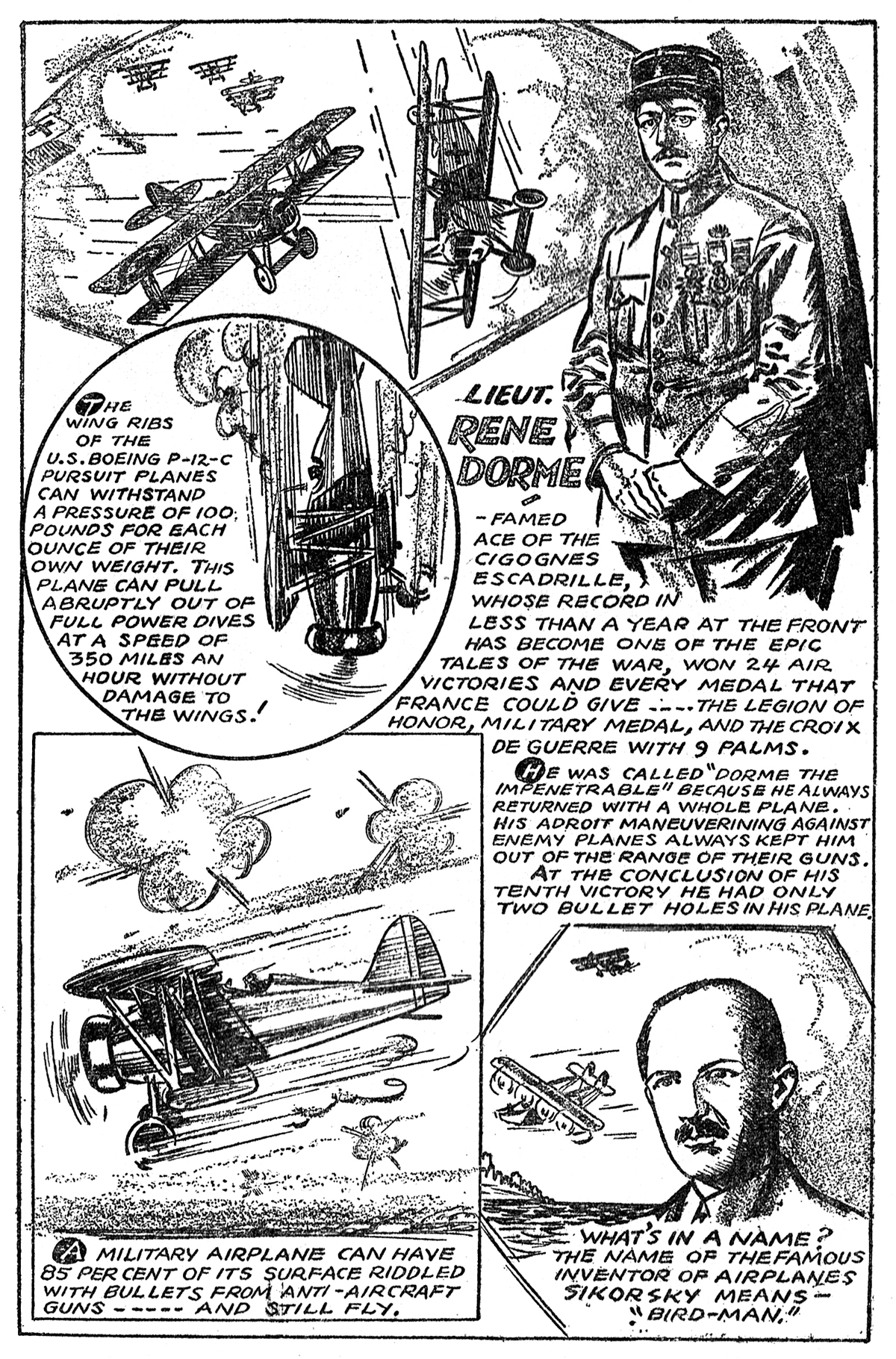





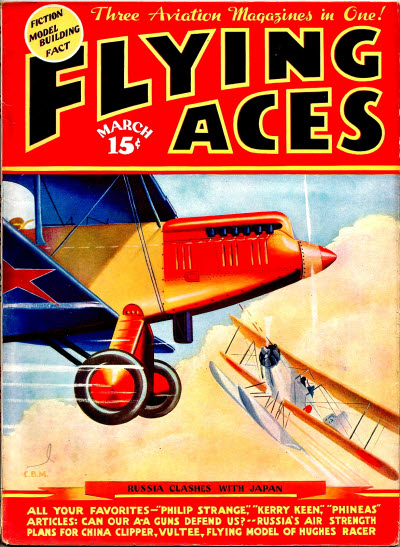 You heard right! That marvel from Boonetown, Iowa is back! And this time we find that Knight of Calamity finds himself shrieking amongst the sheiks in “Doin’s in the Dunes” from the pages of the March 1936 Flying Aces.
You heard right! That marvel from Boonetown, Iowa is back! And this time we find that Knight of Calamity finds himself shrieking amongst the sheiks in “Doin’s in the Dunes” from the pages of the March 1936 Flying Aces. August 31, 1887, scion of one of the blue-blooded families In old Boston, was Norman Pslnce, the founder of the famous LaFayette Escadrille. Educated at Groton and Harvard for a career in business with his wealthy family, he hazarded his promising future and used his wealth and family prestige in overcoming obstacle’s to form a squadron of American aviators for battle at the front. With him in the beginning were Thaw, Chapman, Rockwell, McConnell, Hall and Cowdin. These Americans with Prince made up the roster of the original squadron sent up to the front at Luxeuil in May, 1910.
August 31, 1887, scion of one of the blue-blooded families In old Boston, was Norman Pslnce, the founder of the famous LaFayette Escadrille. Educated at Groton and Harvard for a career in business with his wealthy family, he hazarded his promising future and used his wealth and family prestige in overcoming obstacle’s to form a squadron of American aviators for battle at the front. With him in the beginning were Thaw, Chapman, Rockwell, McConnell, Hall and Cowdin. These Americans with Prince made up the roster of the original squadron sent up to the front at Luxeuil in May, 1910.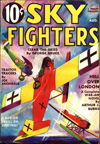
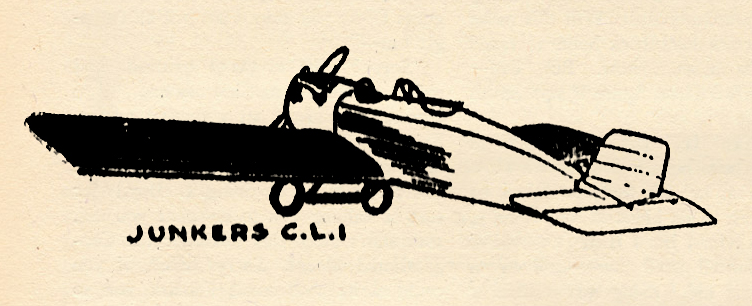
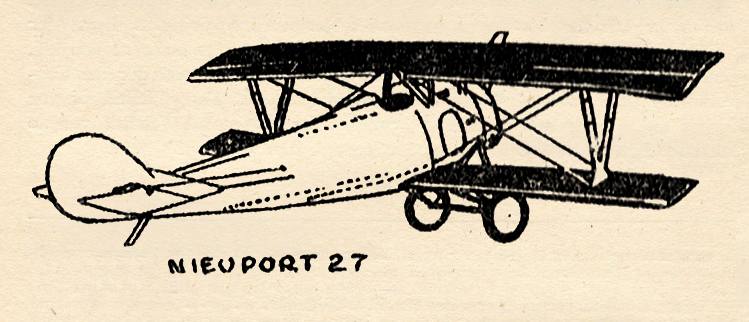
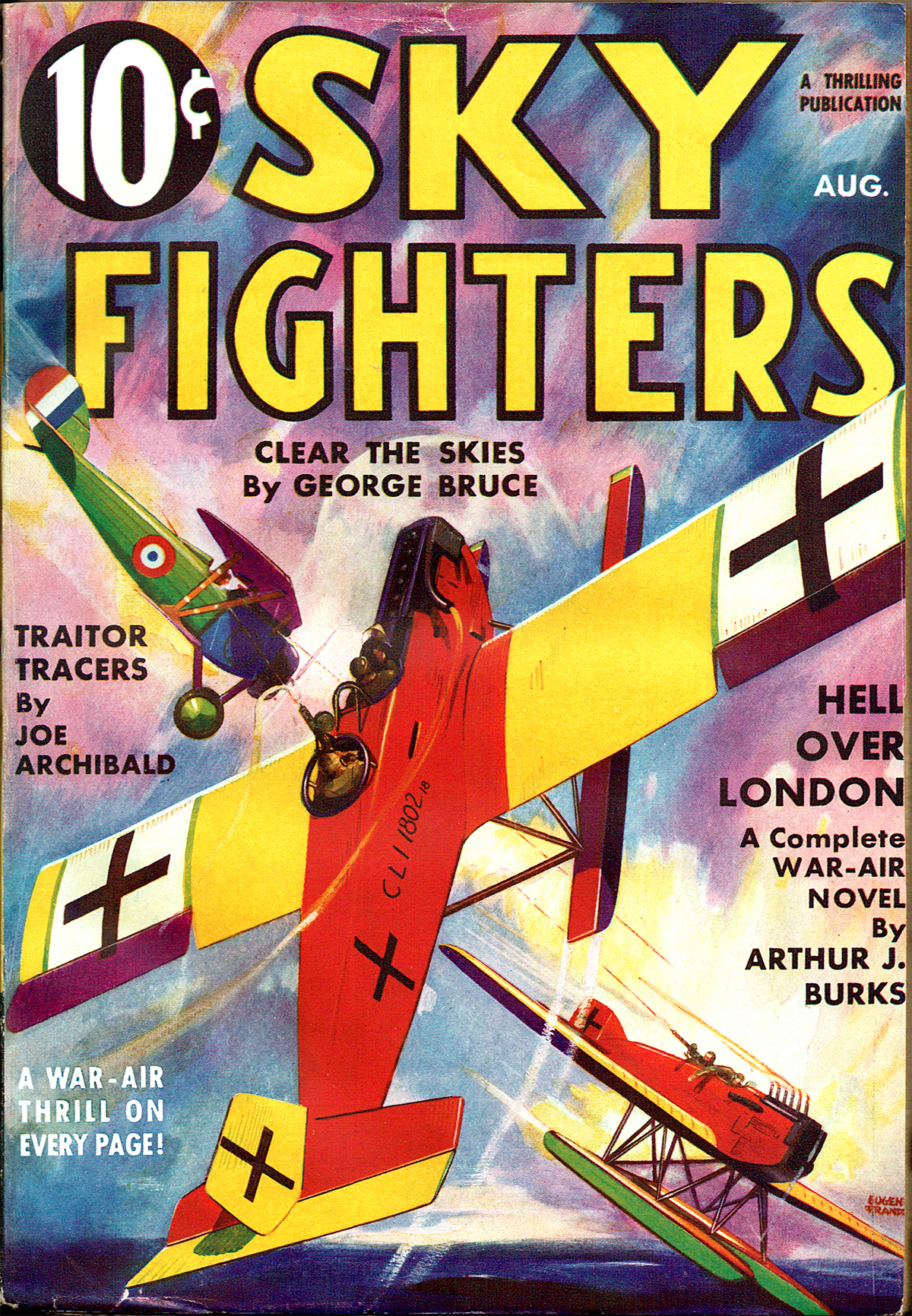
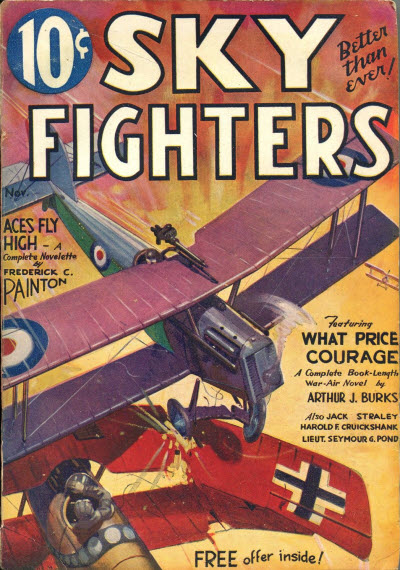 a story from the pen of a prolific pulp author and venerated newspaper man—Frederick C. Painton. In “Aces Fly High” Painton relates a tale of brothers in the same flight. The older, Blake Grenfell tasked with the duty of looking after his younger half brother, Pup. And that’s a task in itself as Pup is determined to become an Ace at the expense of all others. Good men are lost in Pup’s pursuit of becoming an Ace and things just go from bad to worse until drastic actions and sacrafice must be made to save the Grenfell’s name and social standing back home. From the November 1933 issue of Sky Fighters—it’s Frederick C. Painton’s “Aces Fly High!”
a story from the pen of a prolific pulp author and venerated newspaper man—Frederick C. Painton. In “Aces Fly High” Painton relates a tale of brothers in the same flight. The older, Blake Grenfell tasked with the duty of looking after his younger half brother, Pup. And that’s a task in itself as Pup is determined to become an Ace at the expense of all others. Good men are lost in Pup’s pursuit of becoming an Ace and things just go from bad to worse until drastic actions and sacrafice must be made to save the Grenfell’s name and social standing back home. From the November 1933 issue of Sky Fighters—it’s Frederick C. Painton’s “Aces Fly High!”

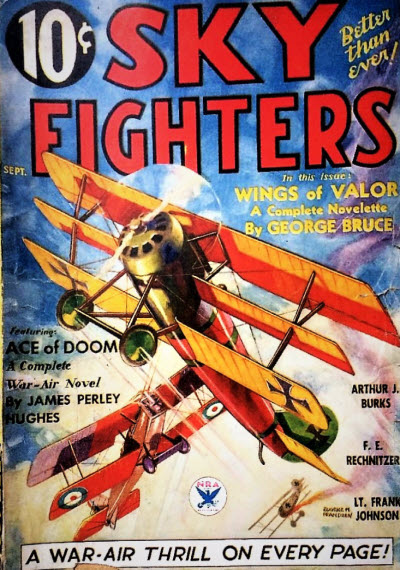 Silent Orth—ironically named for his penchant to boast, but blessed with the skills to carry out his promises—takes on four of Germany’s greatest Aces! Hauptmann Kruger, Weisskopf, Buchstabe and Braunstein. Their insignia are, in the order named, a crimson splash on the sides of the fuselage, representing blood; a hooded figure carrying an enemy’s head in his hands; the opened Book of Life with blank lines, presumably to hold the names of condemned enemies; and a comet with a tail of fire! From the pages of the September 1934 issue of Sky Fighters, it’s Silent Orth in “Shooting Star!”
Silent Orth—ironically named for his penchant to boast, but blessed with the skills to carry out his promises—takes on four of Germany’s greatest Aces! Hauptmann Kruger, Weisskopf, Buchstabe and Braunstein. Their insignia are, in the order named, a crimson splash on the sides of the fuselage, representing blood; a hooded figure carrying an enemy’s head in his hands; the opened Book of Life with blank lines, presumably to hold the names of condemned enemies; and a comet with a tail of fire! From the pages of the September 1934 issue of Sky Fighters, it’s Silent Orth in “Shooting Star!” colors on the first day war was declared, and it was he that answered the challenge of that bold German, lieutenant Max Immelmann, when the latter bombed Paris with leaflets calling for surrender. Immelmann had to fly a matter of but a hundred kilometers, or less, to get over the city of Paris. But when Marchal answered his challenge with an identical flight to Berlin, he had to fly 8QO kilometers.
colors on the first day war was declared, and it was he that answered the challenge of that bold German, lieutenant Max Immelmann, when the latter bombed Paris with leaflets calling for surrender. Immelmann had to fly a matter of but a hundred kilometers, or less, to get over the city of Paris. But when Marchal answered his challenge with an identical flight to Berlin, he had to fly 8QO kilometers.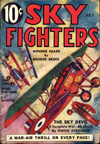
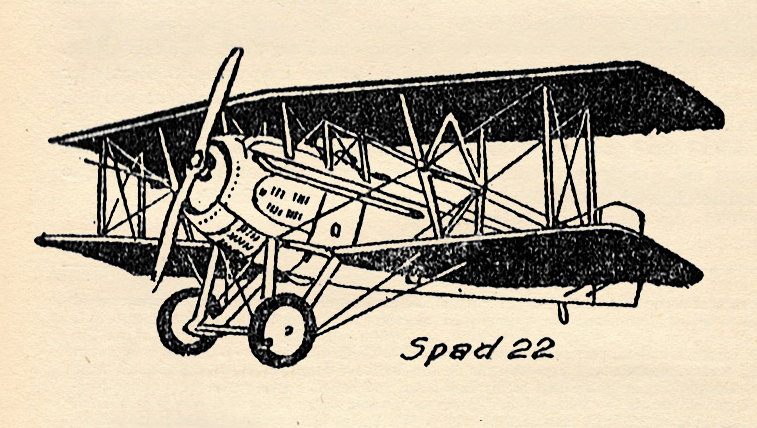
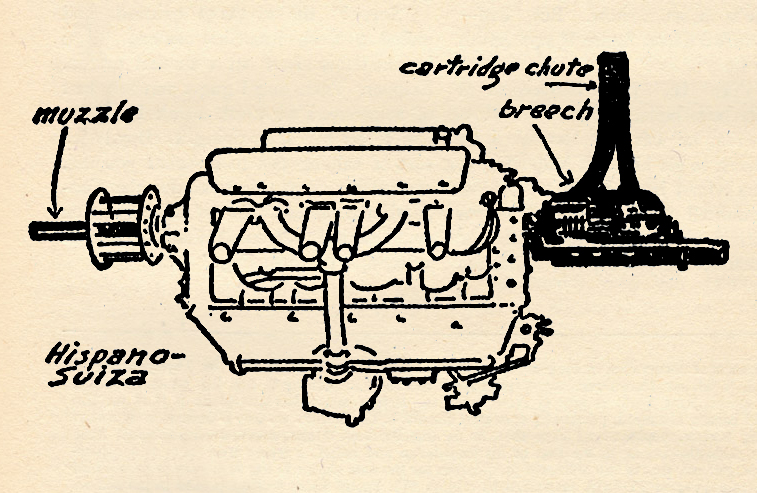
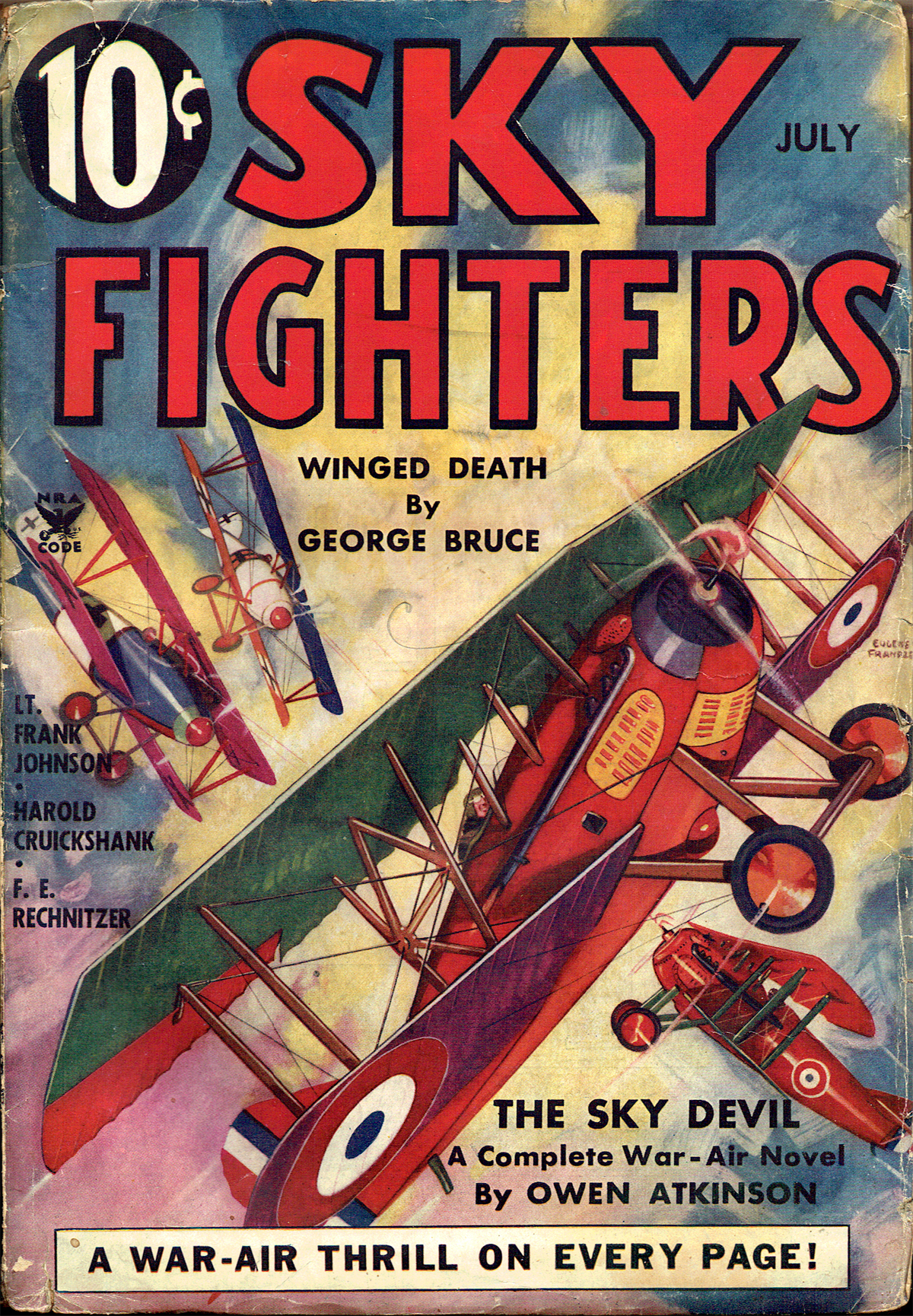
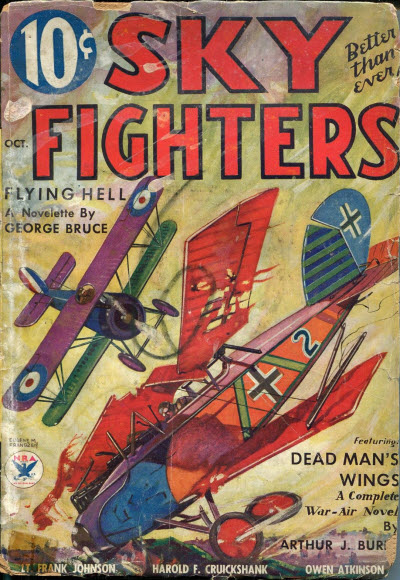 a story by another of our favorite authors—
a story by another of our favorite authors—